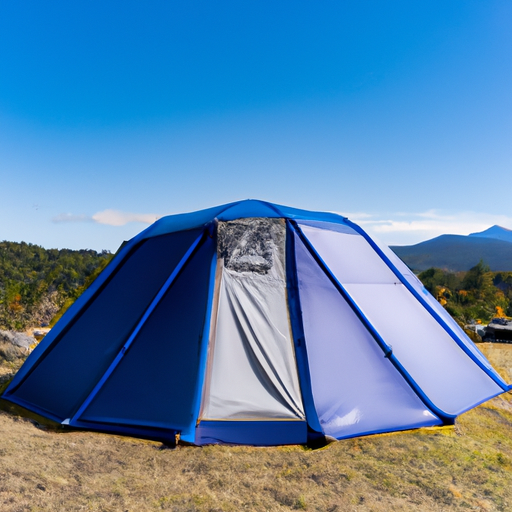The Importance of Waterproofing Tent Seams

The Importance of Waterproofing Tent Seams When it comes to camping, having a waterproof tent is essential. After all, the last thing you want is to wake up in the middle of the night with water dripping onto your sleeping bag. One of the most vulnerable areas of a tent when it comes to water leakage is the seams. These are the areas where the fabric panels are stitched together, and if not properly waterproofed, they can become a major source of frustration and discomfort. Waterproofing tent seams is a crucial step in ensuring that your camping experience remains dry and enjoyable. Even if your tent claims to be waterproof, it is always a good idea to take extra precautions and reinforce the seams. This is because the stitching process creates tiny holes in the fabric, which can allow water to seep through during heavy rain or when the tent is exposed to moisture for an extended period. There are several methods you can use to waterproof tent seams, depending on the type of tent you have and the materials available to you. One popular option is to use a seam sealer. Seam sealers are specially formulated liquids that can be applied directly to the seams to create a waterproof barrier. They are typically easy to use and can be applied with a brush or sponge. It is important to follow the manufacturer’s instructions when using a seam sealer to ensure proper application and effectiveness.
 Another method for waterproofing tent seams is to use a waterproofing spray. These sprays are designed to be applied to the entire tent, including the seams, to create a protective layer that repels water. Waterproofing sprays are often silicone-based and can be easily applied by spraying the tent evenly and allowing it to dry. It is important to note that some waterproofing sprays may alter the color or texture of the tent fabric, so it is recommended to test a small, inconspicuous area before applying it to the entire tent.
In addition to using seam sealers or waterproofing sprays, you can also reinforce the seams by using seam tape. Seam tape is a thin, waterproof strip that can be applied to the inside of the tent seams to provide extra protection against water leakage. To use seam tape, simply apply it along the length of the seam, making sure to press it firmly to ensure proper adhesion. Seam tape is particularly useful for tents with worn or damaged seams, as it can help extend the life of the tent and prevent further damage.
Regardless of the method you choose, it is important to thoroughly clean and dry your tent before applying any waterproofing products. This will ensure that the products adhere properly and provide maximum effectiveness. Additionally, it is a good idea to periodically check the condition of your tent seams and reapply waterproofing as needed, especially after extended use or exposure to harsh weather conditions.
In conclusion, waterproofing tent seams is a crucial step in ensuring a dry and comfortable camping experience. By taking the time to properly waterproof your tent, you can prevent water leakage and enjoy your outdoor adventures without worrying about getting wet. Whether you choose to use a seam sealer, waterproofing spray, or seam tape, it is important to follow the manufacturer’s instructions and regularly maintain your tent to ensure its longevity. So, before your next camping trip, make sure to give your tent seams the attention they deserve and enjoy a dry and cozy night under the stars.
Another method for waterproofing tent seams is to use a waterproofing spray. These sprays are designed to be applied to the entire tent, including the seams, to create a protective layer that repels water. Waterproofing sprays are often silicone-based and can be easily applied by spraying the tent evenly and allowing it to dry. It is important to note that some waterproofing sprays may alter the color or texture of the tent fabric, so it is recommended to test a small, inconspicuous area before applying it to the entire tent.
In addition to using seam sealers or waterproofing sprays, you can also reinforce the seams by using seam tape. Seam tape is a thin, waterproof strip that can be applied to the inside of the tent seams to provide extra protection against water leakage. To use seam tape, simply apply it along the length of the seam, making sure to press it firmly to ensure proper adhesion. Seam tape is particularly useful for tents with worn or damaged seams, as it can help extend the life of the tent and prevent further damage.
Regardless of the method you choose, it is important to thoroughly clean and dry your tent before applying any waterproofing products. This will ensure that the products adhere properly and provide maximum effectiveness. Additionally, it is a good idea to periodically check the condition of your tent seams and reapply waterproofing as needed, especially after extended use or exposure to harsh weather conditions.
In conclusion, waterproofing tent seams is a crucial step in ensuring a dry and comfortable camping experience. By taking the time to properly waterproof your tent, you can prevent water leakage and enjoy your outdoor adventures without worrying about getting wet. Whether you choose to use a seam sealer, waterproofing spray, or seam tape, it is important to follow the manufacturer’s instructions and regularly maintain your tent to ensure its longevity. So, before your next camping trip, make sure to give your tent seams the attention they deserve and enjoy a dry and cozy night under the stars.







